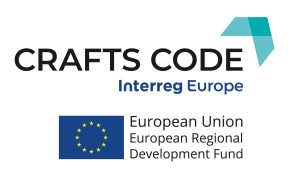Kvarken shop has been established by eight independent craftspeople from the World Heritage site of Kvarken. Independence enables more customer-friendly prices.
The initial problem was to sell own products at more customer-oriented prices without an added retail-sales percentage and lowering the quality of the products. The practice is a grass-root example of what handicraft entrepreneurs taking actions into their own hands and showing what they can do by themselves.
The initial problem was to sell our own products, hence we set up our own shop. A small group of 8 craftspeople started running Kvarken Shop handicraft shop in summer 2019. As one may not have enough resources to run an own shop and produce at the same time, 8 craftspeople joined their forces, agreed on rules and processes, and kicked off the business. The estimated amount of tourists was 50000-60000/summer.
The product assortment is based on the selection of the group and some external products were also included to complete the offer, including art ceramics, wool and silk products, silver and glass objects, paintings, knitwear and handicraft, wood works, natural cosmetics, but also books about local Björköby cupboard makers and cupboards. Sometimes local islander bread and canned lamb are also sold. The staff is dressed in traditional outfits and create stories around the activity. Since June 2019, we collaborate with local tourist guides.
Resources needed
Low. Staff makes most of the products and takes care of the shop, payments, reporting, bookkeeping and marketing. Products also sold are refreshments and raincoats. Usually, there is one seller only - more staff during events. Making use of existing traditional outfits and the World Heritage site.
Evidence of success
-New groups of customers and activities (tourism)
-A desired financial result that was also enough to develop the
activity (in a a location with a smaller touristic flow and customer base)
-Independence: the group was able to do business activities by themselves and employ themselves
-Plenty of positive feedback despite prejudice, the shop increased cooperation and tourism activity in the village
-Improved language skills and mental well-being of the craftspeople themselves
Difficulties encountered
A challenge was to asses situations and react quickly to customer needs. Everyone must know the products well and improve their language skills. The location is 40 km from Vaasa, and there is no electricity or water, which we resolved by solar panels for light and bringing water in canisters.
Potential for learning or transfer
The case is an example of a fully craftspeople led activity. It is transferable to any location and context. The main tools for improving innovation are in the business model and process - listening to customers, customer-orientation, empathy, quick reactions and reorienting the activity, rapid experiments, narration, and cooperation with stakeholders. There is also a link to the local community and tourism, and use of stories and narration in the activity.
This operational model is easily transferable to any place where people move and where there are not many services. The premises did not require great investment, and creativity helped to achieve a lot. It is worth first investigating who are the customers and what their needs are. A versatile selection of well-presented products, materials of high quality and locality, products that are part of the environment, a clean shop, and taking into account of customer needs is what made this business successful against bad odds.
Tags: Entrepreneurship, Green, Heritage, Innovation, Manufacturing, Tourism








